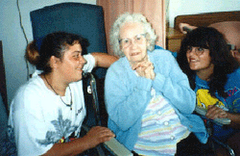Fortunately, the current two Bishops (Bishop Robert W. Finn and Archbishop Joseph F. Naumann) of Greater Kansas City deserve much, much better grades than most recent KC Bishops. I wish I had started to summarize their accomplishments when each Bishop took charge, but I really thought they did not have what was needed to dig the Church out of the pit of Modernism. However, the list of our current Bishops' good and faithful works gets longer and longer.
1. The Leaven and The Catholic Key diocesan newspapers are much improved. [Lots could be said in support of this conclusion--perhaps in a future post. The Key is now better than The Leaven, in my opinion.]
2. The diocesan leaderships are no longer hotbeds of dissent, even if some local parishes and 'Catholic' colleges remain bulwarks of Modernism.
3. The Bishops acknowledge and support the contributions and aspirations of traditional Catholics, even giving churches for the offering of the old Latin Mass and allowing FSSP and ICKSP priests to serve as chaplains.
4. Bishop Finn shows character, strength, and wisdom when dealing with dissenters. ['Nuff said!]
5. Archbishop Naumann seems to have taken a quieter approach in handling dissenters, but the results also seem fairly good, as diocesan Masses seem less 'experimental' than before. [Interestingly, I've observed two Kansas parishes where people were invited to kneel at the beginning of Mass where they ask God for forgiveness of their sins. I assume Archbishop Naumann is responsible for this welcome 'innovation.']
6. Archbishop Naumann and Bishop Finn are both strong pro-life supporters. Almost every week, their diocesan newspapers have an article or two on the life issues, and Archbishop Naumann usually leads a monthly rosary march to the abortion clinic in Kansas City, KS. In addition, both Bishops lead efforts to ban harvesting of stem cells from aborted infants, and Archbishop Naumann sponsored the production of a stem cell video to encourage opposition to the practice.
7. Bishop Finn has recruited the Benedictine Sisters of Mary, Queen of the Apostles, a traditional group of Catholic nuns, and is extending considerable support and encouragement to them.
8. Both Bishops recognize the evil of pornography and have organized programs to combat it.
9. Archbishop Naumann, a member of the Bishops' Committee on Marriage and Family Life, appears to recognize the great danger to the Church of the loss of over 50 percent of Catholic marriages. See my related post.
10. Archbishop Naumann has written many good columns in The Leaven that teach Catholic doctrine and that address thorny issues, such as contraception, 'free' love, and confession.
11. The two Bishops jointly sponsored the Annual Corpus Christi procession from St. Thomas More Church to Avila College, emphasizing Catholic belief in transubstantiation of the bread and wine into the Body and Blood of Jesus Christ.
12. Bishop Finn has appointed faithful stewards of Catholic teaching to key roles in his diocese.

13. Both Bishops are working very hard and successfully to get religious vocations. Bishop Finn just announced that the Missouri diocese now has 25 seminarians. He promoted a diocesan observance of 30 Days of Prayer to St. Joseph for vocations that ended when he led a pilgrimage to St. Joseph's Oratory of Mount Royal in Montreal, Quebec. [It's heartening to see Bishop Finn is not afraid to get on his knees! Photo from The Key.]
14. Archbishop Naumann recognizes the importance of serving the homeschooling community. The Savior Pastoral Center was the site of a recent homeschooling conference and Laura Berquist will promote homeschooling at a July 15 conference starting at 1:00 pm at Benedictine College in Atchison, KS.
16. Archbishop Naumann is not afraid to publicly confront Governor Kathleen Sebelius on her pro-abortion activities. [Catholic pro-lifers are still waiting for the Archbishop to publicly acknowledge that the Kansas governor has removed herself from the Catholic Church and should no longer receive Communion. See my related post.]
17. Bishop Finn and Archbishop Naumann are co-sponsoring a Global Living Rosary during May 2008 at Kauffman Stadium. Also see here.
Not everything is all right or even significantly improving, but events over the past two years indicate that the days of unopposed Modernism in Kansas City have come to an end. Moreover, there is a resurgence of faith and Catholic action that I haven't seen for a long, long time.









